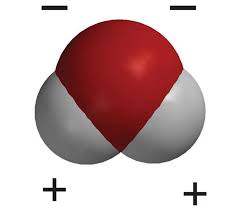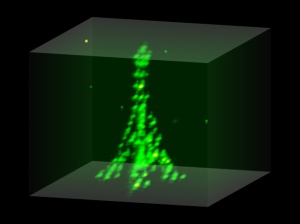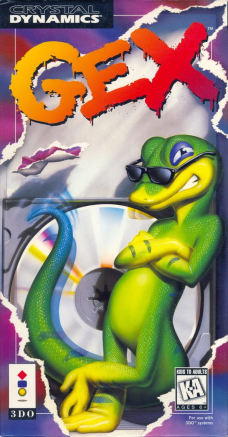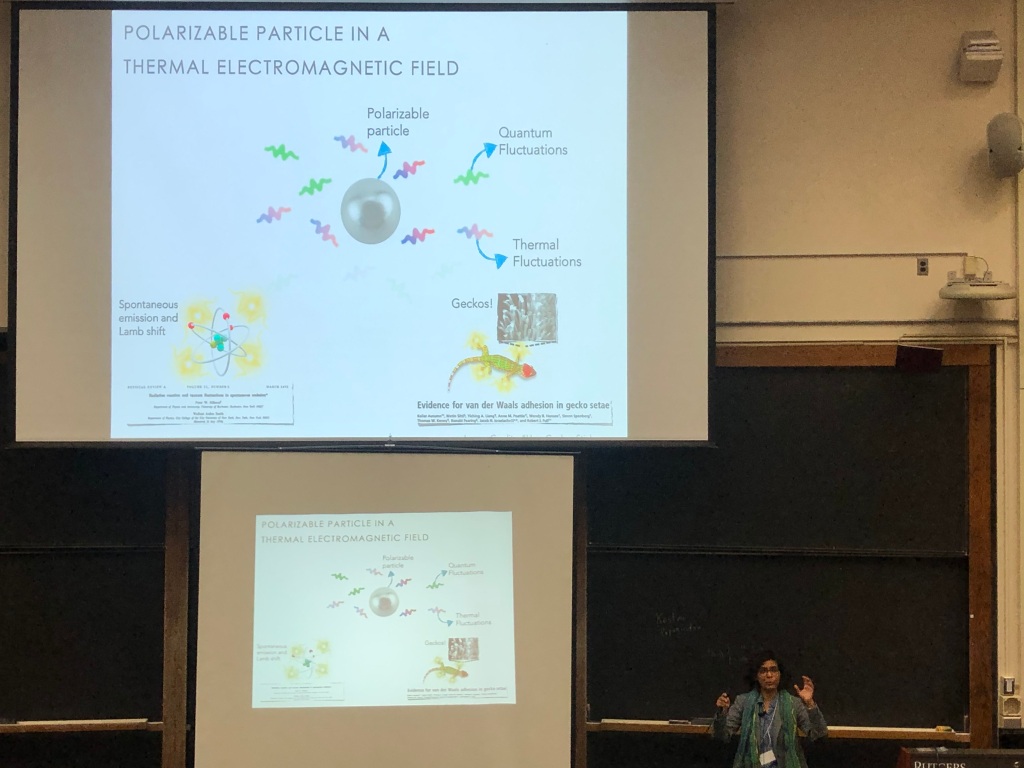When my brother and I were little, we sometimes played video games on weekend mornings, before our parents woke up. We owned a 3DO console, which ran the game Gex. Gex is named after its main character, a gecko. Stepping into Gex’s shoes—or toe pads—a player can clamber up walls and across ceilings.
I learned this month how geckos clamber, at the 125th Statistical Mechanics Conference at Rutgers University. (For those unfamiliar with the field: statistical mechanics is a sibling of thermodynamics, the study of energy.) Joel Lebowitz, a legendary mathematical physicist and nonagenarian, has organized the conference for decades. This iteration included a talk by Kanupriya (Kanu) Sinha, an assistant professor at the University of Arizona.
Kanu studies open quantum systems, or quantum systems that interact with environments. She often studies a particle that can be polarized. Such a particle carries an electric charge, which can be distributed unevenly across the particle. Examples include a water molecule. As encoded in its chemical symbol, H2O, a water molecule consists of two hydrogen atoms and one oxygen atom. The oxygen attracts the molecule’s electrons more strongly than the hydrogen atoms do. So the molecule’s oxygen end carries a negative charge, and the hydrogen ends carry positive charges.1

When certain quantum particles are polarized, we can control their positions using lasers. After all, a laser consists of light—an electromagnetic field—and electric fields influence electrically charged particles’ movements. This control enables optical tweezers—laser beams that can place certain polarizable atoms wherever an experimentalist wishes. Such atoms can form a quantum computer, as John Preskill wrote in a blog post on Quantum Frontiers earlier this month.

A tweezered atom’s environment consists not only of a laser, but also everything else around, including dust particles. Undesirable interactions with the environment deplete an atom of its quantum properties. Quantum information stored in the atom leaks into the environment, threatening a quantum computer’s integrity. Hence the need for researchers such as Kanu, who study open quantum systems.
Kanu illustrated the importance of polarizable particles in environments, in her talk, through geckos. A gecko’s toe pads contain tiny hairs that polarize temporarily. The electric charges therein can be attracted to electric charges in a wall. We call this attraction the van der Waals force. So Gex can clamber around for a reason related to why certain atoms suit quantum computing.
Winter break offers prime opportunities for kicking back with one’s siblings. Even if you don’t play Gex (and I doubt whether you do), behind your game of choice may lie more physics than expected.
1Water molecules are polarized permanently, whereas Kanu studies particles that polarize temporarily.



Pingback: The quantum gold rush | Quantum Frontiers